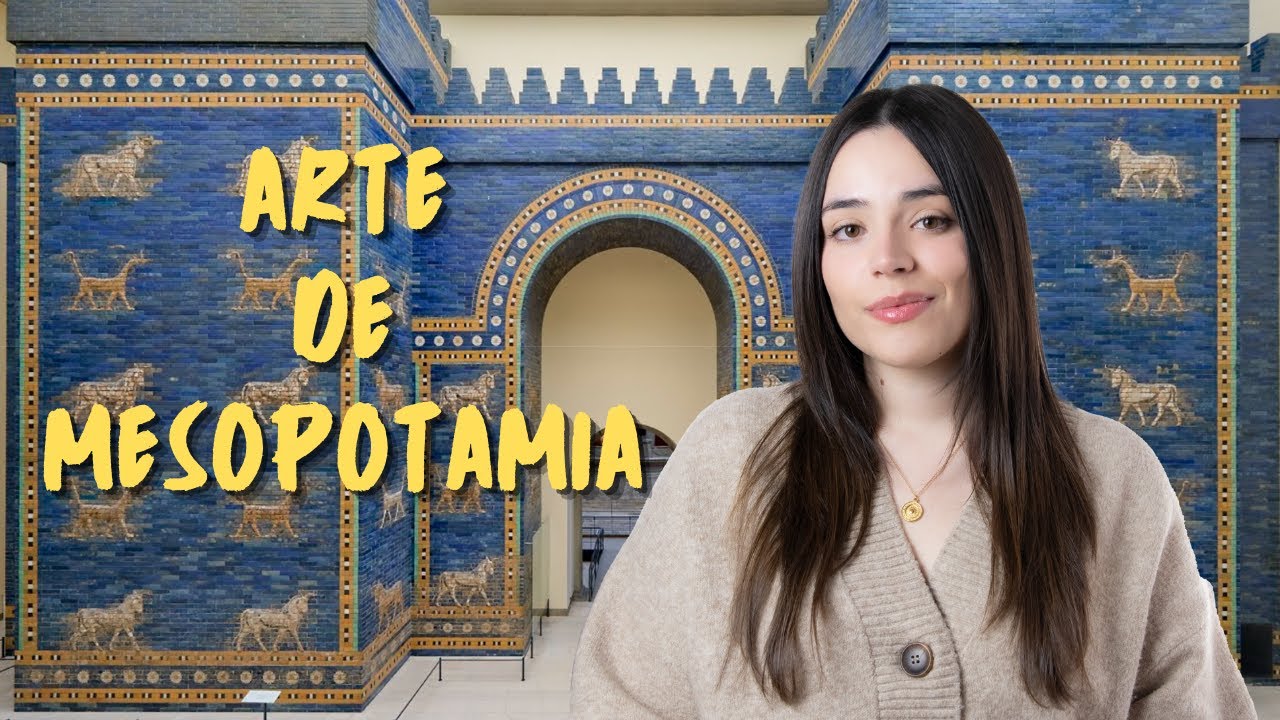Rise of Sumer: Cradle of Civilization DOCUMENTARY
Summary
TLDRThis video delves into the rise of ancient Mesopotamian civilizations, starting from the Uruk period. It explores the transition from hunter-gatherer societies to settled agricultural lifestyles, highlighting the unique geographical and environmental factors that influenced the region. The script traces the development of early cities like Uruk, the emergence of specialized labor, and the rise of political and religious systems. It also examines the conflict and expansion of city-states, culminating in the establishment of the first true empire in history. The video offers a rich overview of the origins of urban civilization in the ancient Near East.
Takeaways
- 😀 Ancient civilizations like the Roman Empire and the Han Dynasty were preceded by even older societies, such as the Sumerians, who are considered the pioneers of civilization.
- 🌍 The first true urban settlements emerged in the region of Sumer, roughly 6,000 years ago, marking the beginning of urbanized society.
- ⛲ Mesopotamia, meaning 'land between rivers', refers to the area between the Tigris and Euphrates rivers, whose geography heavily influenced the development of early civilizations.
- 🌧️ Mesopotamian deities, like Enlil, were often associated with natural elements such as wind, air, and storms, reflecting the region's unpredictable flooding and environmental challenges.
- 🌱 The shift from hunter-gatherer societies to settled agricultural lifestyles in Mesopotamia laid the groundwork for civilization's growth and complexity.
- 🏙️ The city of Uruk is believed to be the first true urban center in Mesopotamia, featuring significant advancements like large buildings, social hierarchy, and temple-sponsored workshops.
- 📝 Writing systems developed during the Uruk period were initially used for record-keeping, particularly for taxes and tributes, and were based on symbols rather than spoken language.
- ⚔️ Uruk's influence spread across the Near East, and its colonies and style of architecture reached regions such as Syria, Iran, and Egypt.
- 👑 The decline of Uruk around 2900 BC led to the emergence of Sumerian city-states, which were politically autonomous and often engaged in territorial conflicts.
- 👑 During the Early Dynastic Period, kings, known as 'lugals', began to emerge, asserting control over city-states and diminishing the religious power of the temples.
- 🏛️ Mesopotamian city-states each had patron gods associated with their cities, such as Ur's god Nana and Uruk's goddess Inanna, which played a key role in governance and warfare.
- 🌍 The eventual rise of a centralized system led to the first true empire under the leadership of Sargon of Akkad, marking a new phase in Mesopotamian history.
Q & A
What was the main characteristic of the civilization in Mesopotamia around 10,000 years ago?
-Around 10,000 years ago, humans in Mesopotamia began to shift from a hunter-gatherer lifestyle to settled agricultural communities, marking the start of the rise of civilization in the region.
How did the geography of Mesopotamia influence its civilization?
-Mesopotamia, meaning 'land between rivers,' was situated between the Tigris and Euphrates rivers. The region's flat nature and frequent floods influenced the development of religion and societal structures, as Mesopotamians believed their gods controlled the floods, leading to a focus on appeasing deities like Enlil.
What were the major contributions of the Sumerians during the Uruk period?
-During the Uruk period, the Sumerians developed urban centers with advanced architecture, social hierarchies, full-time specialized workers, and early systems of writing, which were primarily used for recording tributes and food distributions.
What role did the temple and priest-king play in early Mesopotamian societies?
-In early Mesopotamian societies, the temple and its priest-king were central to political and religious life. The priest-king's power was derived from their role in representing the gods, and they governed with the help of scribes, priests, and administrators.
Why did Uruk's influence spread across the Near East?
-Uruk's influence spread across the Near East through its mass-produced pottery and tools, with people from the region either settling in existing towns, establishing new colonies, or even engaging in military conquest to control resources.
What led to the decline of Uruk around 2900 BC?
-The decline of Uruk around 2900 BC could have been caused by internal conflicts, such as rebellions in its colonies or civil wars within the city, leading to its loss of hegemonic power.
How did the rise of city-states in Sumer after Uruk’s decline change the political landscape?
-After Uruk's decline, Sumer saw the rise of independent city-states, each with its own urban center and surrounding villages. This created a political landscape of small-scale conflicts over resources, leading to the eventual emergence of dynastic kingship.
What was the role of city gods in Sumerian political life?
-City gods played a key role in Sumerian political life, with each city-state being dedicated to a particular god. The kings often sought the approval of these gods, as their will was believed to determine the success of military campaigns and the stability of the state.
How did the concept of kingship evolve in early Mesopotamian society?
-Initially, military leaders were elected by popular assembly, but over time, this evolved into a dynastic kingship system. The first kings, or lugals, were considered 'great men,' often backed by the support of the temple or city gods.
What was the significance of the conflict between Lagash and Umma in the Early Dynastic Period?
-The conflict between Lagash and Umma over the region of Guadena highlights the importance of agriculture and resources in Mesopotamian politics. It also demonstrates how kings used their military successes to glorify their city gods and solidify their power.
Outlines

此内容仅限付费用户访问。 请升级后访问。
立即升级Mindmap

此内容仅限付费用户访问。 请升级后访问。
立即升级Keywords

此内容仅限付费用户访问。 请升级后访问。
立即升级Highlights

此内容仅限付费用户访问。 请升级后访问。
立即升级Transcripts

此内容仅限付费用户访问。 请升级后访问。
立即升级浏览更多相关视频

LA MESOPOTAMIA (Sumeri, Babilonesi, Assiri, Accadi, Ittiti) | Storia - in10minuti

MESOPOTAMIA, el ARTE de las PRIMERAS CIVILIZACIONES de la HISTORIA | OBRAS y CARACTERÍSTICAS

Early Dynastic Mesopotamia | Ancient Documentary | The Sumerian and Akkadian Empires.

Ancient Mesopotamia

Ancient Sumer City-States

Arte na Antiguidade - Mesopotâmia
5.0 / 5 (0 votes)
